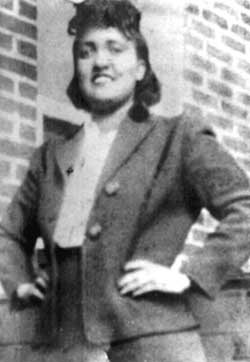 The new understanding between the NIH and the Lacks family does not include any financial compensation for the family. The Lacks family hasn’t, and won’t, see a dime of the profits that came from the findings generated by HeLa cells. But this is a moral and ethical victory for a family long excluded from any acknowledgment and involvement in genetic research their matriarch made possible." Read more here: http://thegrio.com/2013/08/07/nih-finally-makes-good-with-henrietta-lacks-family-and-its-about-time-ethicist-says/
The new understanding between the NIH and the Lacks family does not include any financial compensation for the family. The Lacks family hasn’t, and won’t, see a dime of the profits that came from the findings generated by HeLa cells. But this is a moral and ethical victory for a family long excluded from any acknowledgment and involvement in genetic research their matriarch made possible." Read more here: http://thegrio.com/2013/08/07/nih-finally-makes-good-with-henrietta-lacks-family-and-its-about-time-ethicist-says/
But does this make up for the fact that they have made money for all these years and the family will never see any at all? I honestly do not think so...
About Henrietta Lacks
Henrietta Lacks was an African-American woman who was the unwitting source of cells (from her cancerous tumor) which were cultured by George Otto Gey to create an immortal cell line for medical research. This is now known as the HeLa cell line. Neither Lacks nor her family gave her physician permission to harvest the cells. At that time, permission was neither required nor customarily sought. The cells were later commercialized. In the 1980's, family medical records were published without family consent. In March 2013, German researchers published the DNA code, or genome, of a strain of HeLa cells without permission from the Lacks family.
The growth of her cells by a researcher at the hospital helped answer the demands of the 10,000 who marched for a cure to polio shortly before Lacks' death. By 1954, the HeLa strain of cells was being used by Jonas Salk to develop a vaccine for polio. To test Salk's new vaccine, the cells were quickly put into mass production in the first-ever cell production factory.
Demand for the HeLa cells quickly grew. Since they were put into mass production, Henrietta's cells have been mailed to scientists around the globe for "research into cancer, AIDS, the effects of radiation and toxic substances, gene mapping, and countless other scientific pursuits". HeLa cells have been used to test human sensitivity to tape, glue, cosmetics, and many other products. Scientists have grown some 20 tons of her cells, and there are almost 11,000 patents involving HeLa cells.
In the early 1970s, the family of Henrietta Lacks started getting calls from researchers who wanted blood samples from them to learn the family's genetics (eye colors, hair colors, and genetic connections). The family questioned this, which led to them learning about the removal of Henrietta's cells
This issue and Mrs. Lacks' situation was brought up in the Supreme Court of California case of Moore v. Regents of the University of California. On July 9, 1990, the court ruled that a person's discarded tissue and cells are not their property and can be commercialized. Read more here: http://en.wikipedia.org/wiki/Henrietta_Lacks

No comments:
Post a Comment
Thank you for visiting Experiencing History. Your comment will be posted upon approval.